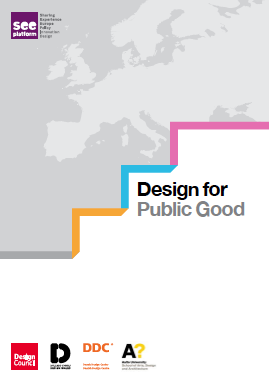Design for Public Good, a new report for the European Commission

The UK Design Council and three other members of the SEE Platform (Sharing Experience Europe) – the Danish Design Centre, Design Wales and Aalto University, Finland – on Tuesday published a new report, Design for Public Good, encouraging the European Union and its member states to adopt design-led innovation to create the next generation of public services and policy that can meet the pressing demands of the future.
The report follows the publication in March of the Design Commission report, Restarting Britain 2, which calls for design thinking to be used to improve UK public services. Design for Public Good now brings this message to the EU, but also extends it to look at the potentially huge gains design methodology can bring to policymaking as well as services.
The report describes the key benefits of design thinking for government as follows:
- Design-led innovation is a joined-up process, with no inefficient handover from analysis to solution to implementation
- Rather than jumping straight to expensive and risky pilots, design process tests iteratively, starting with low-cost, simple models (prototypes) and designing out risk with each new version
- Rather than disjointedly patching together incremental solutions as problems arise, design thinking looks at the entire system to redefine the problem from the ground up
- Design thinking starts by understanding user needs in order to ensure solutions are appropriate, waste is avoided and end users buy into them
- While the factors that cause silo structures in government may be stubborn, design methods offer uniquely effective ways of understanding which teams and departments are relevant to a problem and engaging them in collaborations.



